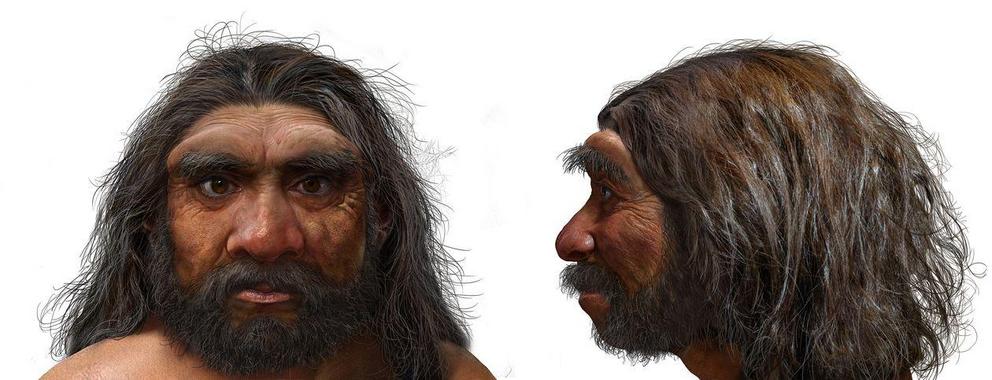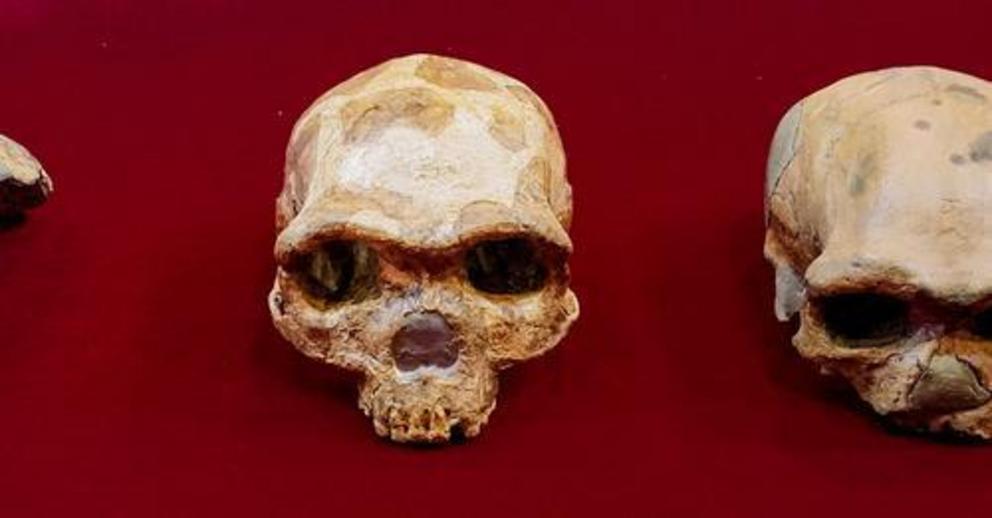‘Dragon Man’ skull discovery in China tells story of unknown human ancestor
New study says prehistoric cranium belongs to now-extinct species that was modern humans’ closest relative, though not all scientists are convinced

A comparison, from left to right, of Peking Man, Maba, Jinniushan, Dali and Harbin (‘Dragon Man’) crania. Kai Geng
For 85 years, the human skull lay in an abandoned well in the northern Chinese city of Harbin. A farmer concealed the relic there in 1933 like an heirloom, so invading Japanese soldiers couldn’t seize it as war booty. The farmer had been part of the labor crew who had unearthed it while digging foundations for a bridge over the Songhua River.
From his deathbed, the farmer revealed the secret to his grandchildren, who retrieved the prehistoric skull in 2018 and donated it to a university near Beijing. On Friday, an international research team announced in a study published in the journal Innovation that the fossilized cranium—the largest and most complete of its kind—belonged to a previously unknown species that may be modern humans’ closest relative.
If the conclusions of the study—one of three new ones spotlighting the complexity of human beginnings—are accurate, decades of thought about human evolution have been upended.
The research team named the species Homo longi, Dragon Man.
“It’s remarkable in its preservation and its completeness,” Karen Baab, an anthropologist at Midwestern University in Glendale, Ariz. who wasn’t involved in the research effort, said of the skull. “In some ways, the face looks almost modern.”

A portrait of ‘Dragon Man.’Photo: Chuang Zhao
The scientists examined the anatomical features of the skull, dated it and subjected it to chemical tests before concluding that Dragon Man and his kind lived in northern China more than 146,000 years ago during an era of glacial cold, when broad-shouldered Neanderthals and other now-extinct hominins ranged across Asia and Europe.
The skull likely belonged to a male in his 50s, with thick brow ridges, deep-set eyes, a bulbous nose and a brain as big as any modern human’s, the scientists said.
“We see a mosaic of primitive and more modern human features,” said Xijun Ni, a paleoanthropologist at the Chinese Academy of Sciences in Beijing and a co-author of the study published in Innovation. “The combination of these features makes it unique. Our analyses suggest it is our sister species.”
Several independent experts said they aren’t convinced.
“My suspicion is that they will be challenged on their assignment to a new species,” said Curtis Marean, a paleoanthropologist at the Institute for Human Origins at Arizona State University in Tempe.
But the examination of 600 subtle anatomical features of the skull helped the China team conclude that the skull represents a species more closely related to Homo sapiens than either Neanderthals or Denisovans, another early human that lived at the same time, Dr. Ni said. If so, Homo longi might have shared more than a landscape with early humans, several experts in human origins said. Both Neanderthals and Denisovans mated with early humans.
“The DNA evidence suggests that if a hominin sees another hominin they’re happy to interbreed, even if their brow ridge is a little bigger or their skull is a little higher,” said Dr. Baab.
Indeed, research shows that Neanderthal and Denisovan DNA survives within almost everyone living today. Neanderthal genes account for about 2% of the DNA of modern Europeans and Asians, including gene variants associated with cholesterol metabolism, depression, schizophrenia and the risk of contracting Covid-19. Traces persist among Africans as well. Asians also carry varying amounts of Denisovan DNA.
“It underscores the diversity of the human lineage,” said Matt Tocheri, an anthropologist with expertise in human origins at Lakehead University in Ontario. “We’re a small subset of the variation within the human lineage even as recently as the last few hundred thousand years.”
In theory, the team that studied the skull could have used DNA extracted from it to determine whether Homo longi interbred with other now-extinct human species but chose not to try, given concerns they would damage the fossil, Dr. Ni said.
The other two studies, published on Thursday in the journal Science, highlight how migrating human species crossed paths, intermingled and interbred in the Middle East at the crossroads between Africa and Eurasia.
For these studies, scientists from Tel Aviv University and Hebrew University examined fossilized bones and stone tools dating back 120,000 to140,000 years at a site called Nesher Ramla near the city of Ramla in Israel. These belonged to a previously unknown group of hominins who don’t belong to any known species. Their anatomy includes features of Neanderthals and the earliest humans, but their tools were more advanced, the scientists said.
“Biologically, they still look very different and yet behaviorally they have a set of tools that are identical to the tools of the modern humans,” said Marta Mirazon Lahr, an evolutionary biologist at the U.K.’s University of Cambridge who wasn’t involved in the research. “These populations are all very closely related.”
Taken together, the fossils from so many extinct human species are part of a larger puzzle, Dr. Lahr said. “The biggest question of all is why are we different? Something changes in our ancestors and we take over completely,” she said. “It makes me all the more curious to find out whether there must be some very cool biological difference.”
For now, Dr. Ni and his colleagues don’t know what tools Homo longi made, which animals they hunted, what plants they ate or even if they had mastered fire—because they don’t know exactly where the skull was found and therefore can’t search the spot for artifacts or other fossils.
A family secret no longer, the skull from the well retains its mystery.
“We can’t prove that the skull came from the Harbin river deposits, but the data are entirely consistent with it,” said anthropologist Chris Stringer, a specialist in human origins at London’s Natural History Museum who was part of the research team. “Did they have tools? Did they wear clothing? Did they have the use of fire? We don’t know. These people survived very harsh conditions, and that certainly indicates a level of adaptation very surprising for 150,000 years ago.”
Write to Robert Lee Hotz at [email protected]
Appeared in the June 26, 2021, print edition as 'There’s a New Skull in Town: ‘Dragon Man’.'
For a virtual reconstruction of the Harbin cranium please use source link below

